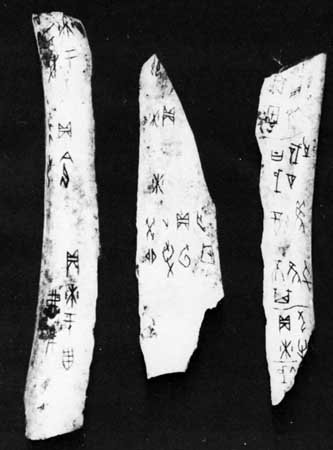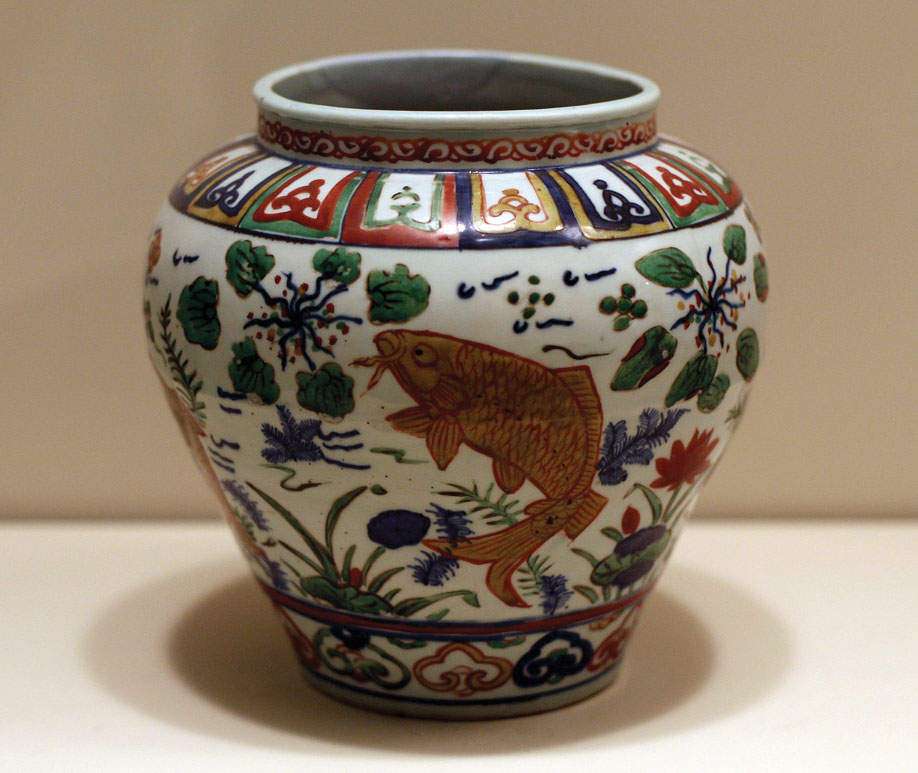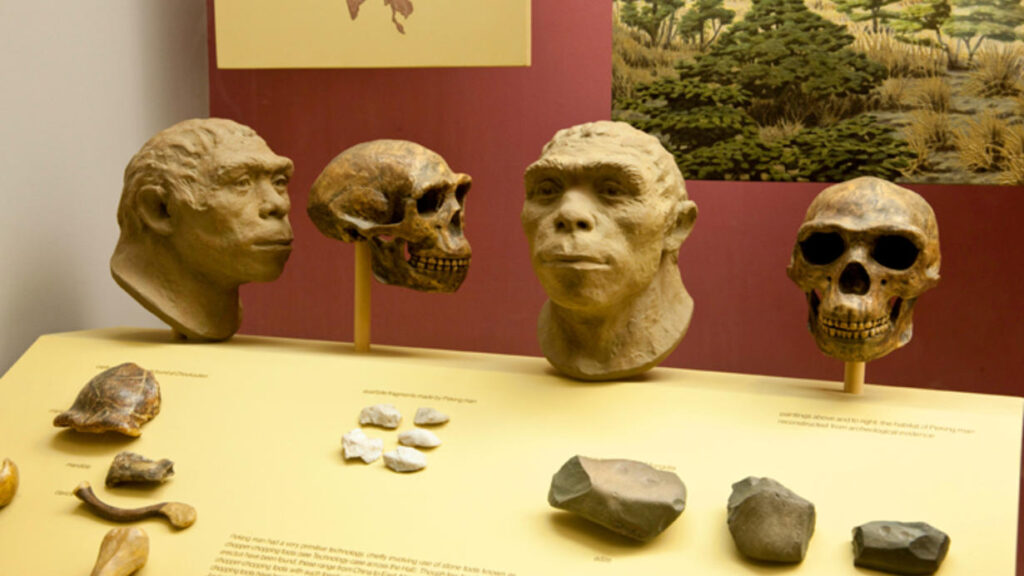ដូចដែលយើងទាំងអស់គ្នាបានដឹងហើយថា ចិនជាប្រទេសដែលមានផ្ទៃដីធំ និងមានប្រជាជនច្រើនជាងគេបង្អស់នៅលើពិភពលោក ហើយចិនក៏ជាប្រទសដែលមានអរិយធម៌ចំណាស់មួយក្នុងចំណោមអរិយធម៌ចំណាស់ៗទាំង៤លើពិភពលោក ដែលក្នុងនោះមានដូចជា មេសូប៉ូតាមី អេហ្ស៊ីប ឥណ្ឌុស និងចិន ។ តឹកតាងនៃការតាំងទីរស់នៅរបស់មនុស្សនៅលើទឹកដីនៃប្រទេសនេះ គឺមានតាំងពីយុគថ្មរំលីងមកម្ល៉េះ។ ការជ្រើសរើសតាំងទីនៅតាមតំបន់ទន្លេនេះ គឺមិនមែនចែដន្យនោះទេ គឺស្របទៅតាមវិស័យកសិកម្ម នេសាទ និងការចិញ្ចឹមសត្វ ដែលមនុស្សពឹងផ្អែកទៅលើប្រភពទឹកជាសំខាន់។
អរិយធម៌ចិនបានរីកចម្រើននៅតាមបណ្តោយទន្លេពីរ គឺទនេ្លលឿង និងទន្លេ Yangtzeប្រមាណ៣០០០ឆ្នាំមុនគ.ស. និងជាអរិយធម៌ដែលគ្រប់ដណ្តប់ផ្ទៃដីធំជាងគេបង្អស់ក្នុងចំណោមបណ្តាអរិយធម៌ផ្សេងៗទៀត ហើយក៏មានក្រុមជនជាតិភាគតិចៗផ្សេងៗគ្នារស់នៅលើទឹកដីប្រទេសនេះ។ នៅរវាងស.វ.ទី២មុនគ.ស. ចិនគឺជាអាណាចក្រមួយដែលមមាញឹកទៅនឹងការជួញដូរផ្សេងៗជាមួយនឹងបណ្តាប្រទេសនៅតំបន់អាស៊ីកណ្តាល អាស៊ីខាងបូព៌ាជាដើម ដែលបានបង្កើតជាបណ្តាញផ្លូវពាណិជកម្មមួយហៅថា ផ្លូវសូត្រ(Silk Roads) ដោយការជួញដូរនោះ គឺជាការជួញដូររវាងវត្ថុធាតុដើម និងវត្ថុមានតម្លៃ ឬជាមួយផ្សេងៗទៀត។ អ្នកស្រាវជ្រាវបានបង្ហាញថាប្រទេសនេះមានអក្សរកត់ត្រាតាំងពីពាក់កណ្តាលស.វទី២មុនគ.ស ក្នុងរាជ្ជកាល Shang (១២០០-១០៥០មុនគ.ស.) ពោលគឺតាមរយៈការរកឃើញបំណែកឆ្អឹង នៅស្ថានីយ Yinxu ដែលជារាជធានី ក្នុងរាជ្ជកាល Shang។ ឆ្អឹងដែលបានរកឃើញនោះប្រហែលជាបំណែកផ្នែកណាមួយនៃឆ្អឹងសត្វអ្វីដែលសំខាន់គឺឃើញមានអក្សរចារពីលើបំណែកឆ្អឹងទាំងនោះ។
នៅក្នុងប្រវត្តិសាស្រ្តរបស់ចិនការប្រើប្រាស់អក្សរទាំងនោះ គឺសម្រាប់ធ្វើការកត់ត្រារដ្ឋបាល រាល់សកម្មភាពតាម ថ្ងៃ ខែ និង ឆ្នាំ ដែលហៅថា កំណត់ត្រា (Chinese Annals)។ នៅឆ្នាំ ១៩៧៥ មានការធ្វើកំណាយនៅក្នុងផ្នូរលេខ១១ ដែលស្ថិតក្នុងខេត្ត Hubei ដោយបានរកឃើញនូវកំណត់ត្រាដែលចារនៅលើ ឬស្សី ហៅថា Qin Bamboo of shuihudi ដែលស្ថិតនៅក្នុងរាជ្ជកាល Qin (២២១-២០៦មុនគ.ស.) ដោយក្នុងកំណាត់ត្រានោះបានបរិយាយអំពីច្បាប់ នយោបាយ នៅក្នុងរាជ្ជកាល Qin។ សំខាន់ជាងនេះផងដែរ អ្នកស្រាវជ្រាវបានរកឃើញទីតាំងផ្នូរកប់សពស្តេច Qinshihuang នៅខាងជើងភ្នំ Lishan ដែលមានចម្ងាយប្រមាណ៣៥គីឡូ ពីខេត្ត Shaanxi ដែលការរកឃើញនោះ គឺជារូបសំណាក់ទាហានដីដែលមានប្រមាណ៨០០០រូប បញ្ចុះជាមួយនឹងផ្នូរ ស្តេច Qinshihuang ដែលគេបានដឹងថា ជាអធិរាជ ក្នុងរាជ្ជកាល Qin។
ប្រជាជនចិនបុរាណមានបច្ចេកទេស និងគំនិតច្នៃប្រឌិតខ្ពស់ក្នុងការផលិតវត្ថុសិល្បៈ តាមទម្រង់ផ្សេងៗដែលបានរកឃើញពីកន្លែងជាច្រើននៃអរិយធម៌នេះរួមមាន គ្រឿងស្មូនដីដូចជាកុលាលភាជន៍ Porcelain ប្រណិតៗ គ្រឿងអលង្ការ រូបចម្លាក់ដី អំពីថ្ម លោហៈធាតុ អំពីដីឥដ្ឋ និងជាពិសេសការកសាងសំណង់មហាកំពែងដែលវែងជាងគេនៅលើពិភពលោក។ ការប្រើប្រាស់នៃបច្ចេកទេសទាំងនោះ គឺមានតាំងពីយូរយាណាស់មកហើយពោលតាមរយៈការសិក្សាបុរាណលោហៈវិទ្យាលើវត្ថុលោហៈផ្សេងៗបានបង្ហាញថា ប្រទេសចិនបានបង្កើតបច្ចេកទេសស្មិតលោហៈធាតុដោយខ្លួនឯង ដែលមានអាយុកាលប្រហាក់ប្រហែលគ្នាជានឹងឥណ្ឌាដែរ ពោលរវាងឆ្នាំ១១០០មុនគ.ស. និងបច្ចេកទេសនោះក៏ឃើញមាននៅក្នុងប្រទេសកម្ពុជាសម័យបុរាណដែរ។
បើតាមរយៈការស្រាវជ្រាវផ្នែកបុរាណវិទ្យា មនុស្សដែលបានមកតាំងទីរស់នៅក្នុងទឹកដីប្រទេសនេះចាស់ជាង៣០០០ឆ្នាំមុនគ.ស. ទៅទៀត។ អ្នកស្រាវជ្រាវជនជាតិកាណាដាបានធ្វើកំណាយនៅឆ្នាំ១៩២៩ ក្នុងទីតាំងល្អាងភ្នំមួយកន្លែងដែលមានឈ្មោះ Zhoukoudian មានចំងាយប្រមាណ៤០គីឡូពីទីក្រុងបេកាំង បានរកឃើញផូសីលក្បាលមនុស្សដែលអ្នកស្រាវជ្រាវហៅថា បេកាំងមេន (Peking man)ស្ថិតនៅក្នុងអំបូរ អូមូ អ៊េរិចទុស (Homo erectus) និងតាមរយៈការវិភាគធ្មេញនៃផូស៊ីលនោះ អាចមានអាយុកាលប្រមាណពី៦០០០០០ឆ្នាំ។ ការហៅបេកាំងមេន បែបនេះគឺសំដៅលើការឃើញផូសីលនៃពូជមនុស្សនៅក្នុងទឹកដី ប្រទេសចិន។
ទន្និន័យទាំងអស់ដែលបានបង្ហាញខាងលើនេះ អាចបង្ហាញឲ្យយើងឃើញអំពី តឹកតាំងនៃការតាំងទីរស់នៅរបស់មនុស្សនៅលើទឹកដីនៃប្រទេសនេះ គឺមានតាំងពីយុគថ្មរំលីងមកម្ល៉េះ និងបង្ហាញពីអរិយធម៌នៃប្រទេសចិនមានការរីកចម្រើនខ្លាំងទាំងនយោបាយ សេដ្ឋកិច្ច និងបច្ចេកទេសក្នុងការផលិតវត្ថុសិល្បៈផ្សេងៗជាពិសេសកុលាលភាជន៌ Porcelain ដែលយើងក៏ឃើញមានវត្ថមាននៅក្នុងប្រទេសកម្ពុជាសម័យបុរាណដែរ។
—————————-
Ancient Chinese-Civilization
China is the largest and most populous country in the world and China is one of the four oldest civilizations in the world. These include Mesopotamia, Egypt, Indus, and China. According to the evidence of human settlements on the territory of this country has been since the Paleolithic era, as well it is potential for line with agriculture, fisheries, and animal husbandry, where people depend mainly on water sources.
Chinese civilization flourished along two rivers, the Yellow River and the Yangtze River, around 3,000 BC, and a civilization that covers the largest area among other civilizations. Between the 2nd century, BC China is an empire that is busy trading raw materials and valuables with countries in Central Asia, East Asia, etc., which has established a network called the Silk Roads.
Based on researchers, the Chinese scripts have been found since the middle of the 2nd century BC during the Shang Dynasty (1200-1050 BC). The scripts were used to record administrative activities of the day, month, and year called the Chinese Annals. In 1975, excavations were carried out at Tomb No. 11 in Hubei Province and found a record inscribed on bamboo called Qin Bamboo of Shuihudi during the Qin Dynasty (221-206 BC). More importantly, researchers found the tomb of King Qinshihuang in the northern part of Mount Lishan which was found terracotta warriors about 8,000 buried with the tomb of King Qinshihuang, known as the Emperor of the Qin Dynasty.
In addition, there are many artifacts and sites that have been found including ceramics, jewelry, statues (made from stone, clay, and metal), and the longest Great Wall in the world. These found are defined as the masterpiece technique of production of art forms in Chinese civilization. According to archeological studies on metal objects have shown that China has developed its own metal smelting techniques, which are similar in age to those of India between 1100 BC and that technique is also found in ancient Cambodia.
According to archeological research, the people who settled in this country are more than 3,000 BC. In 1929, Canadian researchers excavated a cave named Zhoukoudian about 40 km from Beijing and found fossils of a human head, researcher called Peking Man in Homo erectus, and through fossil analysis which it can be dated approximately 600,000 years.
All the data presented above can show us the evidence of human settlement on the territory of this country has been since the Paleolithic era and shows that China’s civilization is very developed including political, economic, and techniques in the production of various art objects, especially porcelain ceramics, which we also see present in ancient Cambodia.
អត្ថបទដើម៖ លោក អេង តុលា












